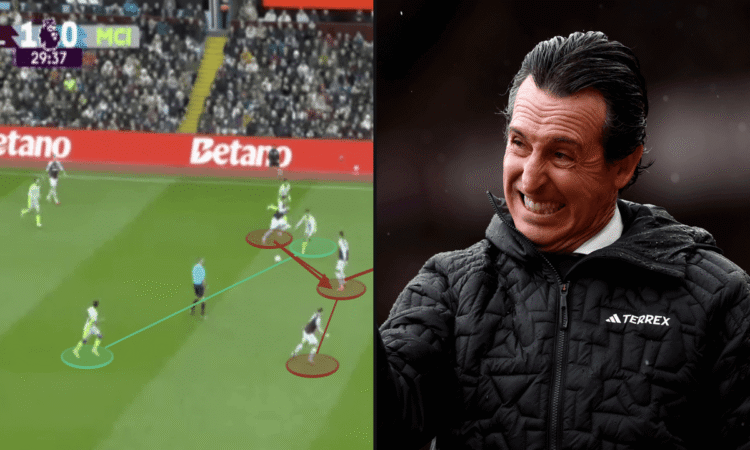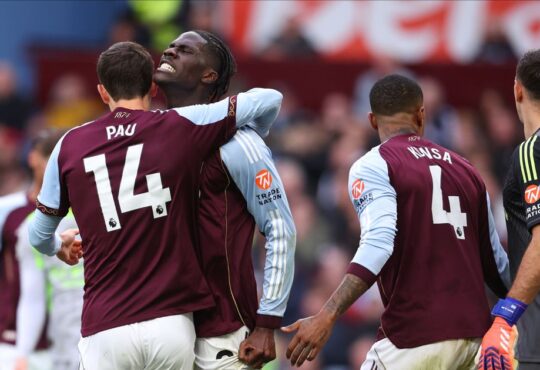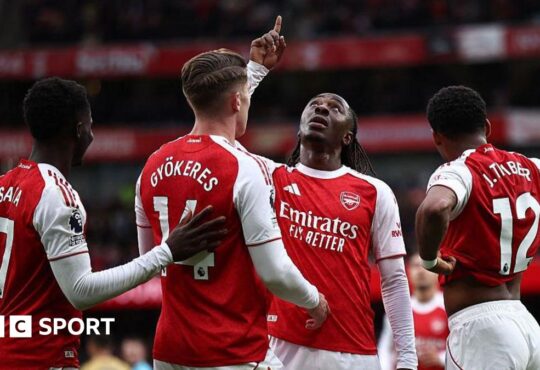
There is a feeling among those close to Unai Emery that only Pep Guardiola rivals his managerial acumen.
Emery, too, holds Guardiola in the same esteem. In the Aston Villa’s manager’s opinion, Guardiola has fundamentally changed the way other coaches see football. He was, and is, a leading influence in shaping Emery’s own style, predicated on controlled possession and midfield overloads.
Emery described his counterpart as a “genius” and “inspiration” in his programme notes for their latest meeting at Villa Park yesterday and until December 2023, had endured 13 miserable games without beating him. In that time, Emery had analysed closely and agonisingly the intricacies of Guardiola’s Barcelona, Bayern Munich and Manchester City teams, which only heightened his appreciation, however painful.
Working out a solution to the multitude of tactical problems Guardiola typically gives a manager seemed a thankless task. Emery had tried several systems and personnel, but they never worked.
It was not until that date in December two years ago, when Villa dominated City in a 1-0 victory, that the dynamic shifted. Emery had found a solution for Guardiola’s City, with the midfield structure a determining factor.
Emery has now beaten Guardiola in both successive meetings at Villa Park, both greatly shaped by the midfield battle. It is only the third occasion in Guardiola’s career that he has lost three consecutive away matches against the same opponent (the others being Liverpool, three times between 2016 and 2018, and Tottenham, five times between 2019 and 2023).

Pep Guardiola could not get the better of Unai Emery (Ed Sykes/Sportsphoto/Allstar via Getty Images)
Yesterday’s victory, however, was different to the rest.
Previously, a common theme has been Emery picking four archetypal midfielders to match up against Guardiola. The first two wins were carved from a box midfield, designed to congest and cut through a Rodri-less City through the middle of the pitch. In possession, Villa would play quick, incisive passes through the large spaces City left on transition, using their extra player to overwhelming benefit.
This time, Emery did not select four traditional centre midfielders, instead going with a defensive pivot of Boubacar Kamara and Amadou Onana, with John McGinn, Morgan Rogers and Emiliano Buendia serving as three No 10s. Against four City midfielders, Villa had five players — half of their outfielders — battling against them.
Once more, Guardiola was without Rodri, meaning he had to stick plasters over a key position, especially against a Villa side that attacks centrally more than any other Premier League outfit. Just as he had attempted in the first of Emery’s wins, Guardiola pushed Stones into midfield with the ball to augment numbers, but the lack of a No 6 remained an acute problem.
Emery was mindful of Stones’ role. In another change to previous wins, Emery’s No 10s were told to stay wider for longer given that, due to Stones moving into midfield, City left spaces either side of their back three. If Villa could win the ball back, McGinn and Buendia had space to carry the ball.
Even when Jadon Sancho replaced the injured Buendia, Emery would gesture for the Manchester United loanee to pull wider, in turn moving City right-back Matheus Nunes towards him and, ergo, creating a passing lane for Rogers, as the closest attacking midfielder, to receive. The image below shows Emery gesturing for Sancho to move towards the touchline:

As demonstrated below, the positions of Sancho and McGinn were wider than usual. This, according to Guardiola, also created two-versus-one overloads for Villa down both flanks — aided by overlapping full-backs.

Meanwhile, Stones’ remit enabled Bernardo Silva and Phil Foden to move into advanced positions and enact a customary Guardiola ploy of pushing five players onto the opponents’ backline.
In an attempt to nullify this, Emery dropped Kamara into defence to stay goal-side of Silva. This shifted Villa into a 5-4-1 shape out of possession, less aggressive in their pressing than in the previous two matches, but ensuring play stayed in front of them. This is particularly pertinent against a City team who have evolved into a more direct style.
“We planted Kamara (deeper) because of how they were playing and how they usually dominate matches,” explained Emery to The Athletic after the game. “So we needed to sacrifice a little bit of something to sit better defensively in our shape. We did drop in Kamara with Silva, and he did a fantastic job.”

On average, Villa won possession 22 metres from their own goal — the deepest they have regained possession against City in the previous three home matches. This was in contrast to the first victory, when Villa won the ball 36 metres from their own goal. “There are many ways to win a football game,” Emery affirmed following the 2-1 defeat against Go Ahead Eagles on Thursday and that sentiment rang true here.
Villa had adjusted to negate City’s evolution, yet the game transpired in a similar way to previous meetings. City again started the more imposing, before being bruised by Villa’s increasing athleticism and midfield power.
After Matty Cash scored as a result of a creative corner routine, McGinn’s chance 10 minutes later was illustrative of City’s struggles to contain Emery’s midfield. Sancho glided diagonally across the pitch, with McGinn rotating the other way. Ollie Watkins had made a run into the channel as Rogers was allowed to be his direct best, attacking through the middle.

If the first half illustrated Villa’s midfield attacking threat, the second underlined their resilience. Guardiola said afterwards that City “adjusted better”, with Villa enduring longer spells without possession.
Nonetheless, Onana and Kamara kept turning the ball over and restricting space for City’s No 10s. The former outmuscled Erling Haaland and came away with the ball, but was amply supported by a defence that won their individual battles and laser-focused substitutes who understood and executed their individual roles.
City were reduced to few opportunities, largely explained by not being able to deliver and offer a level of insertion through midfield to create meaningful attacks.
“We adjusted better second half,” said Guardiola. “We controlled the centre of the middle… they play a lot there.”
Guardiola was right — Villa do play a lot in midfield, but this time, they did so differently. Villa’s 1-0 victory meant they became the first top-flight side since Preston North End in 1936-37 to win four successive league matches following a winless five-game streak to start a campaign.
“Today, the 90 minutes was a very good summary of the last three years,” Emery said. “Confidence in our game plan, commitment in our plan.”
Emery’s biggest strength has long been his ability to coach subtle nuances into his teams. The positions of his midfielders against City, for a third straight home game, were critical in once again beating Guardiola.






